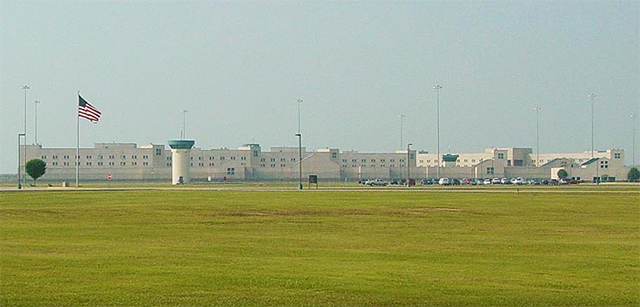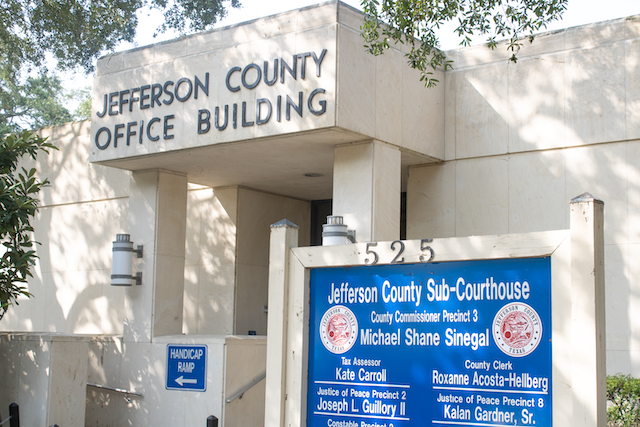Scavenger hunt to teach locals about local history
Published 5:49 pm Friday, August 26, 2016
Southeast Texans will get the opportunity to explore local history in a brand new fashion over the next several weeks — all it requires is a camera and a willingness to sightsee.
The Museum of the Gulf Coast is hosting its first ever Jefferson County Scavenger Hunt. The six-week event started at 9 a.m. on Aug 22 and is open to all ages. Participation is free — just say you’re on the hunt when you walk into the Museum — and you may sign up at any time from Aug 22 to Sep 30. The hunt ends at noon on Oct 1 with a reception and prizes given out to the winners.
Participants should be prepared to do a little research and traveling however as the scavenger hunt will have them sifting through 30 riddles and photographs leading to 30 different sites in Jefferson County, many of which are in Port Arthur and Beaumont; although, there are a few sites to be found elsewhere to boost awareness of local history.
“They have interesting history,” Sarah Bellian, curator for the Museum of the Gulf Coast, said. “We are one big community and we have a shared history. We are all connected.”
Bellian went on to say that the riddles could refer to people, structures, historical markers or “places of significance in Jefferson County.” And while some answers may not physically exist anymore, there will be items of note there or some places that would entice participants to take a tour and visit the local grounds.
“We want people to ask questions about history,” Bellian said. “Some people may ask ‘Why should we care about history that doesn’t affect us?’ And that’s [because] a lot of things in history do affect us. The history in the railroads, refineries, ports…
“It’s just interesting.”
Such diverse examples of “interesting” historical riddles present at the Museum involve accounts of Japanese rice farmers, Southeast Texas bootleggers and an entire wall made out of Caribbean conch shells.
But to Bellian, perhaps the most interesting thing about it all is “how it connects to the future.”
“We should care because history might inform us of what could be, what we could do.”
Many of the answers to the historical riddles could be found with a simple Google search, according to Bellian. However, there is still a strong community aspect to the scavenger hunt because participants could request aid from local experts such as librarians, museum workers, tour guides and public groups like Gulfway Drive Memories.
“I think when you start to inquire about [the local history], you’d find it pretty interesting,” Bellian said.
The scavenger hunt started from a meeting of the Jefferson County Historic Commission, in which historical markers were looked upon in a new light — perhaps even due to a popular mobile game.
“Pokemon Go had people going around and capturing some of them at historical markers,” Bellian said. “So what if you go around with your cellphone and capture [historical] markers on them?”
One of the steps involved in the scavenger hunt is to take photographic evidence of the historical sites visited and present them along with the answers to the Museum. It is generally assumed that the photographs will be taken with a cellphone.
“The real appeal is to go out with your phone and find things you didn’t know about before. And you’ll have the chance to win prizes,” Bellian said.
Bellian wanted to make certain, though, that people involved with the scavenger hunt practice safe and lawful behavior while going to these sites. In fact, one of the prerequisites for participating in the hunt is to sign a waiver that includes a no-trespassing clause from its participants. Contestants under the age of 18 must have a parent or guardian sign for them; and children must participate in the hunt with their parents.
“We want people to be safe and to obey the laws,” Bellian said.
As for why this event is special, the curator of the Museum of the Gulf Coast summed it up with three main points:
“No. 1: If you’re not aware of it, you can’t be expected to care about it… Hopefully by learning about history a little more, people will realize why we care about it.
“No. 2: Everything used to be something else. Everything changes. Say that there’s a park that used to be a train station in the 1920s… you begin to see that we’re standing on top of history. With things constantly changing, it will give us ideas to take what already exists and… to use our imaginations to adapt it for the future.”
“No. 3: It’s fun. Learning something is important. For some reason, a lot of adults seem to think that learning stops when they get out of school… Learning does not stop at schools.”
The first participant to mark off all 30 sites and deliver his or her answers and photographs to the Museum wins the prize. In addition, three bonus categories will be given to the following:
- “Shutterbug” will be awarded to the participant with the best photographs.
- “Hunt Historian” will be awarded to the participant who provides the best additional information about the marker site and/or its historical photographs.
- “Social Media Superstar” will be awarded to the participant whose Facebook post tagging the Museum of the Gulf Coast receives the most likes or shares of any scavenger hunt post.
For more information, call 409-982-7000 or email mogc.curator@gmail.com.





